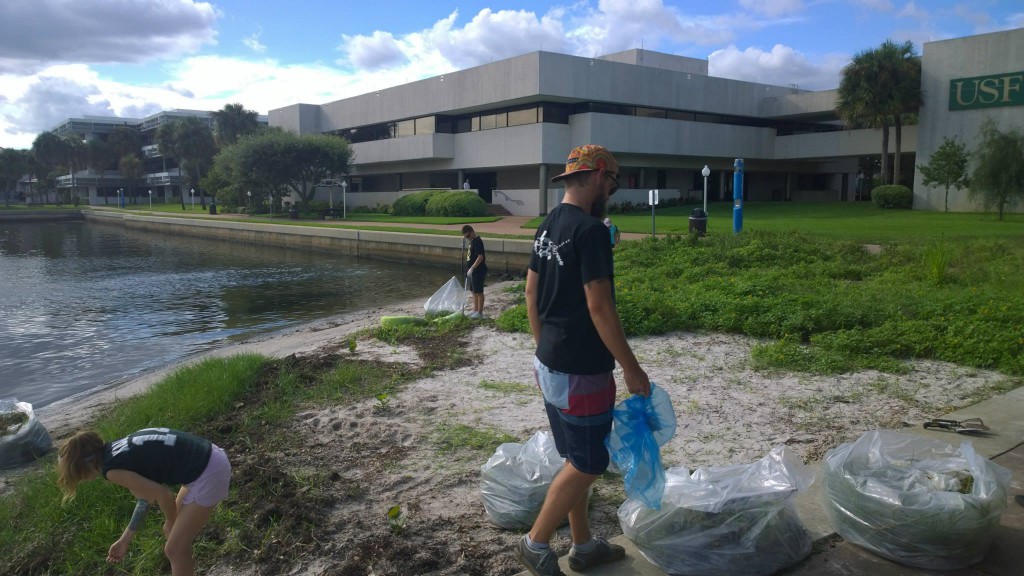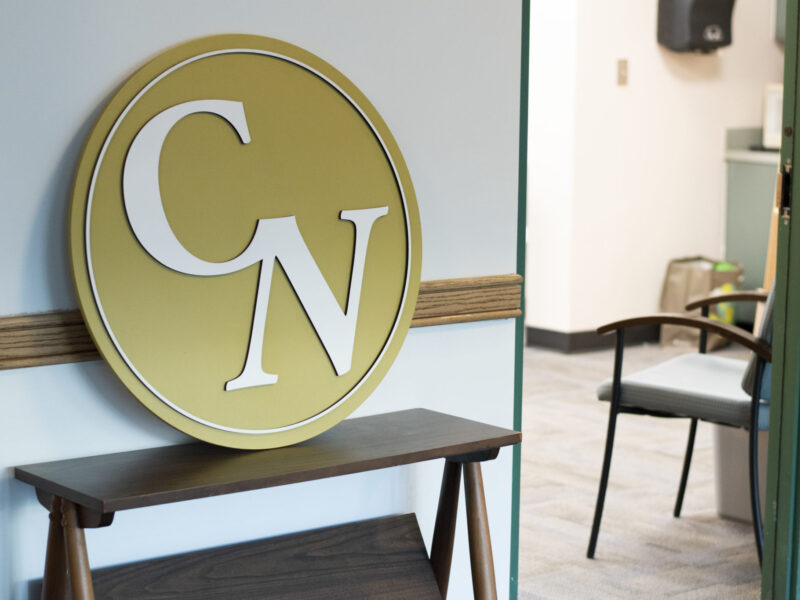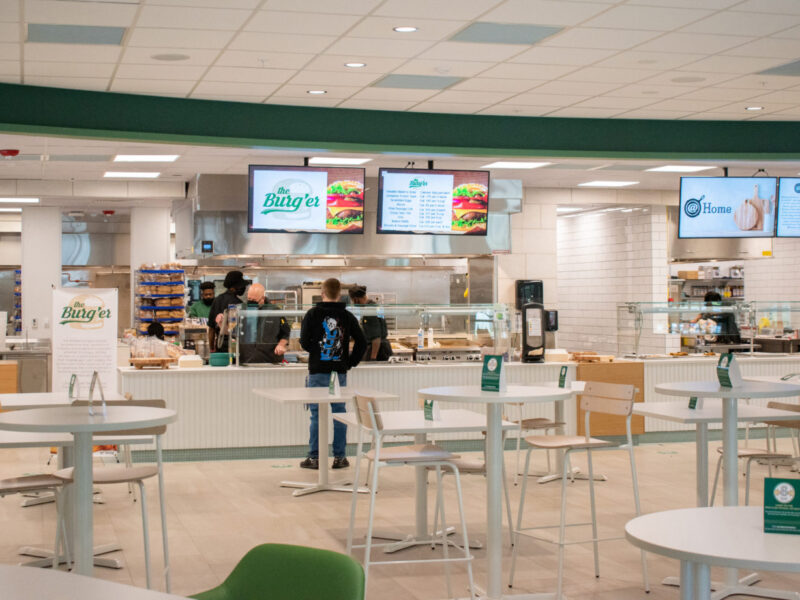
Photo Courtesy of Dylan Canady
Trash in Bayboro Harbor has caught the attention of students, who posted pictures of it on the USF St. Petersburg student-run Facebook forum this week. But it’s been on the mind of the Student Environmental Awareness Society for longer.
SEAS is seeking a miniature grant from the Tampa Bay Estuary Program to fund a restoration plan for the campus harbor and beach. Ideas for the plan include dredging, planting native flora, habitat protection, oyster dome installation, sand replenishment and eradication of trash and pollutants.
USFSP is located along Bayboro Harbor, which connects to Booker Creek and Salt Creek. Daniel Gladstein, a member of SEAS, said that Booker and Salt Creek can carry pollution over to Barboro Harbor. Because Bayboro Harbor is a concentrated area, SEAS is concerned for the harbor’s ecosystem.
In the past, SEAS used a device called a “water goat” to clean out trash from the harbor. The water goat is braided steel with buoys hooked in a “C” shape to the stormwater drain. Below the surface is netting that collects trash and allows fish to still swim underneath.
The water goat is located in front of the National Oceanic and Atmospheric Administration building in Bayboro Harbor, where the harbor connects to Booker Creek.
The water goat is currently broken, but how it broke remains a mystery to SEAS members The company that made the water goat is now out of business, but SEAS president Brandi Murphy believes the water goat can be fixed by an ambitious engineer student.
To help filter water and restore oyster population, SEAS plans to have more oyster domes installed by the Tampa Bay Watch, a nonprofit organization. Oyster domes are concrete circular domes that oysters can cling to, where they can clean up to ten gallons of water per hour.
After adopting the beach from the Keep Pinellas Beautiful Adopt-a-Shore program, SEAS wants to restore the beach by replenishing the sand and planting native flora such as muhly grass, black needlerush and beach sunflowers. At a recent SEAS meeting, members considered fencing off the native flora to allow it to grow without being disrupted.
“[Native plants] are instrumental in keeping the sand in place to form a beach along the seawall,” Murphy said. SEAS also hopes to restore the beach by removing non-native flora, such as an oak tree that is growing on USFSP beach.
Murphy believes that the beach was formed around 1980 when the Army Corp. of Engineers dredged the Bayboro Harbor. The beach developed from storm and tidal influence, boat traffic from the USF Waterfront on the east, and a stormwater run-off outflow on its west.
Routine harbor clean ups are needed to keep the harbor and beach clean. When planning a clean up, it is essential to plan around the tides, Murphy said, such as a spring tide that can be planned around the moon. This past weekend, SEAS hosted a clean up. But help is needed.
“Everyone needs to be connected to the effort and be part of a chain of awareness and action,” said Gladstein.


